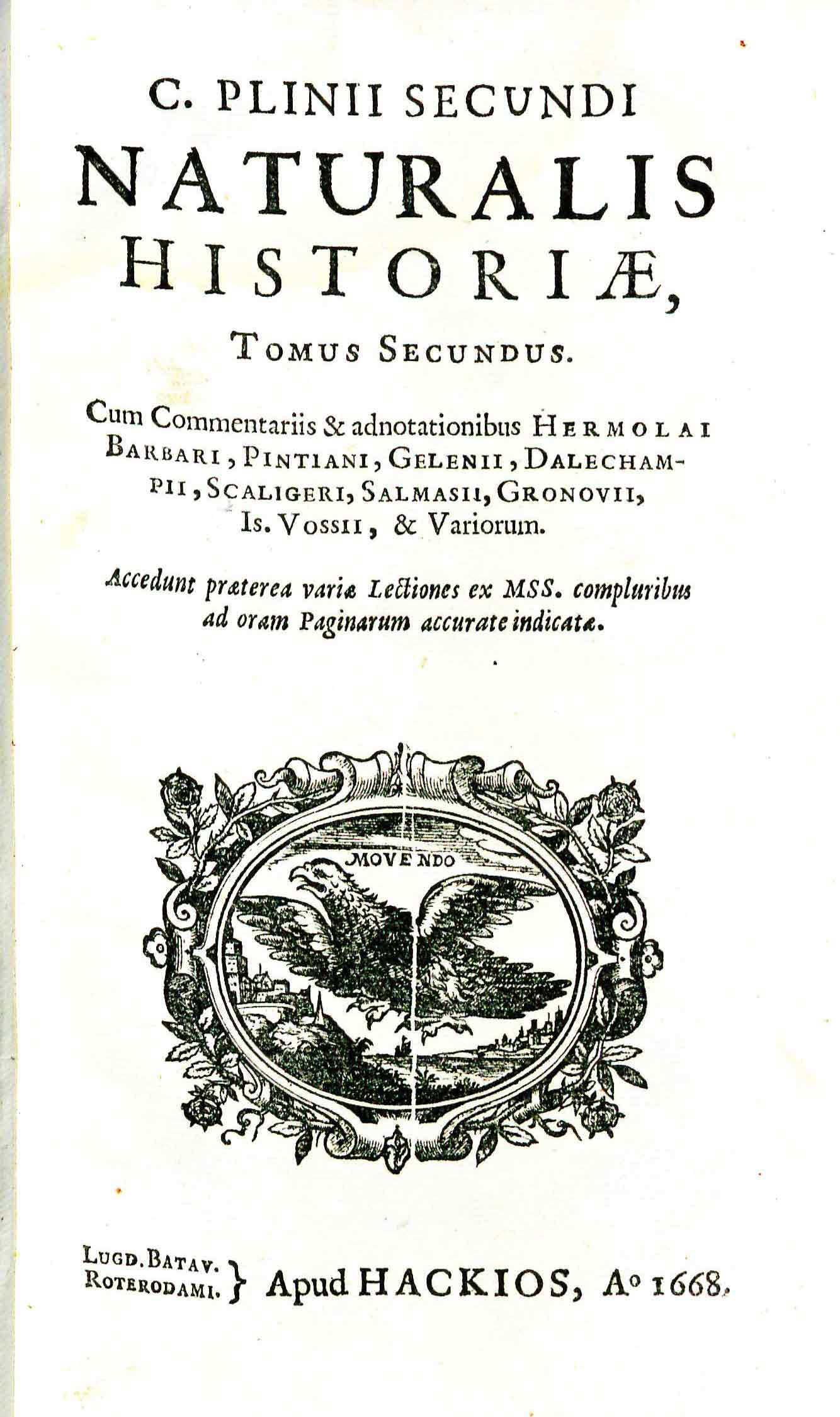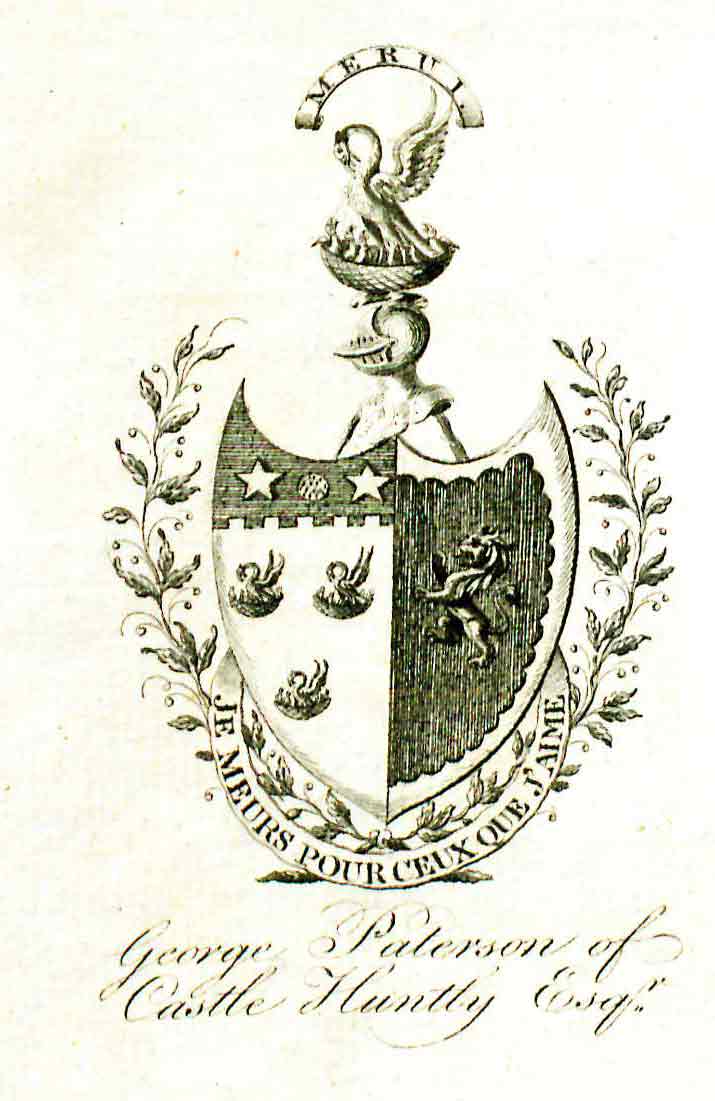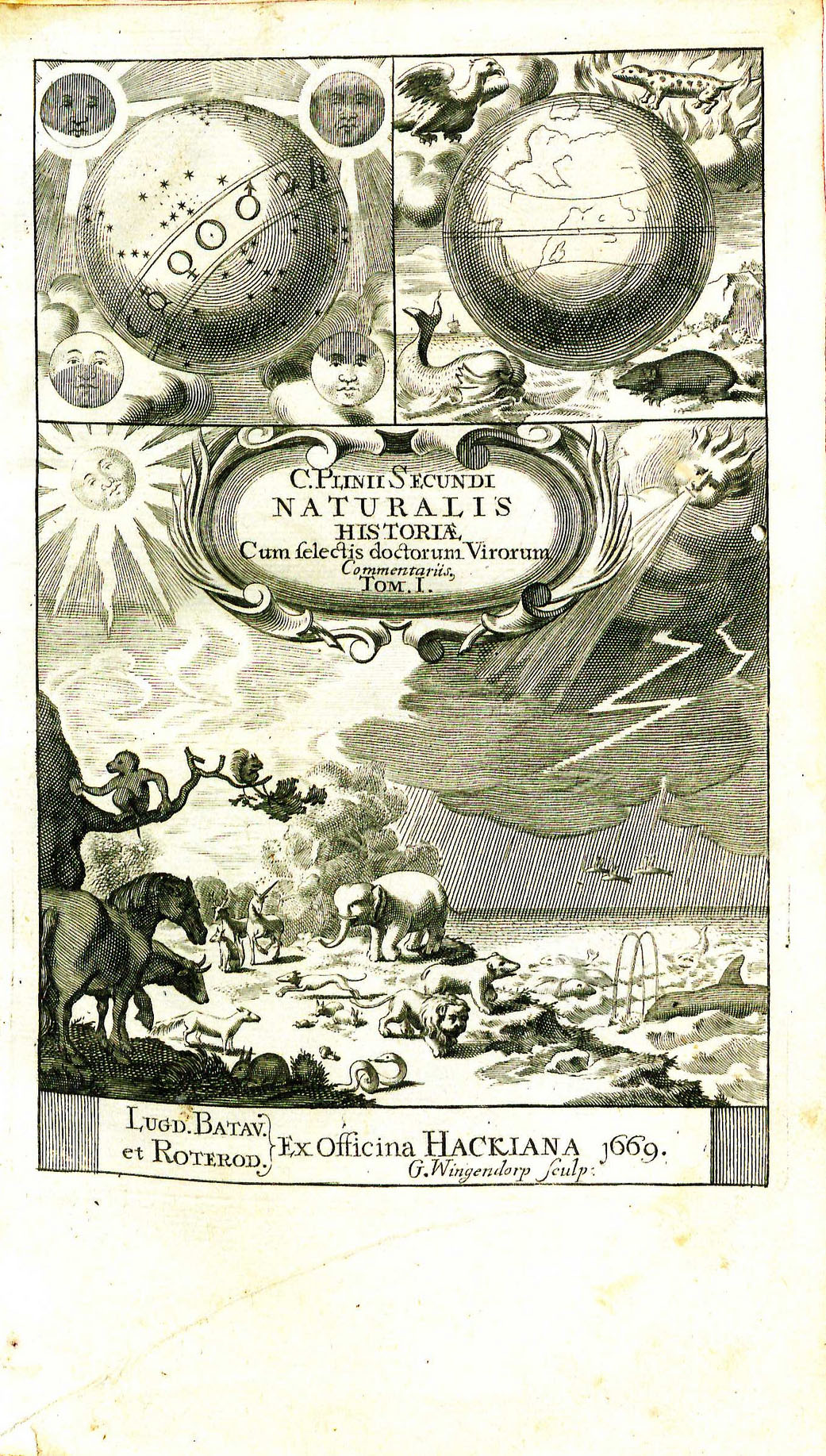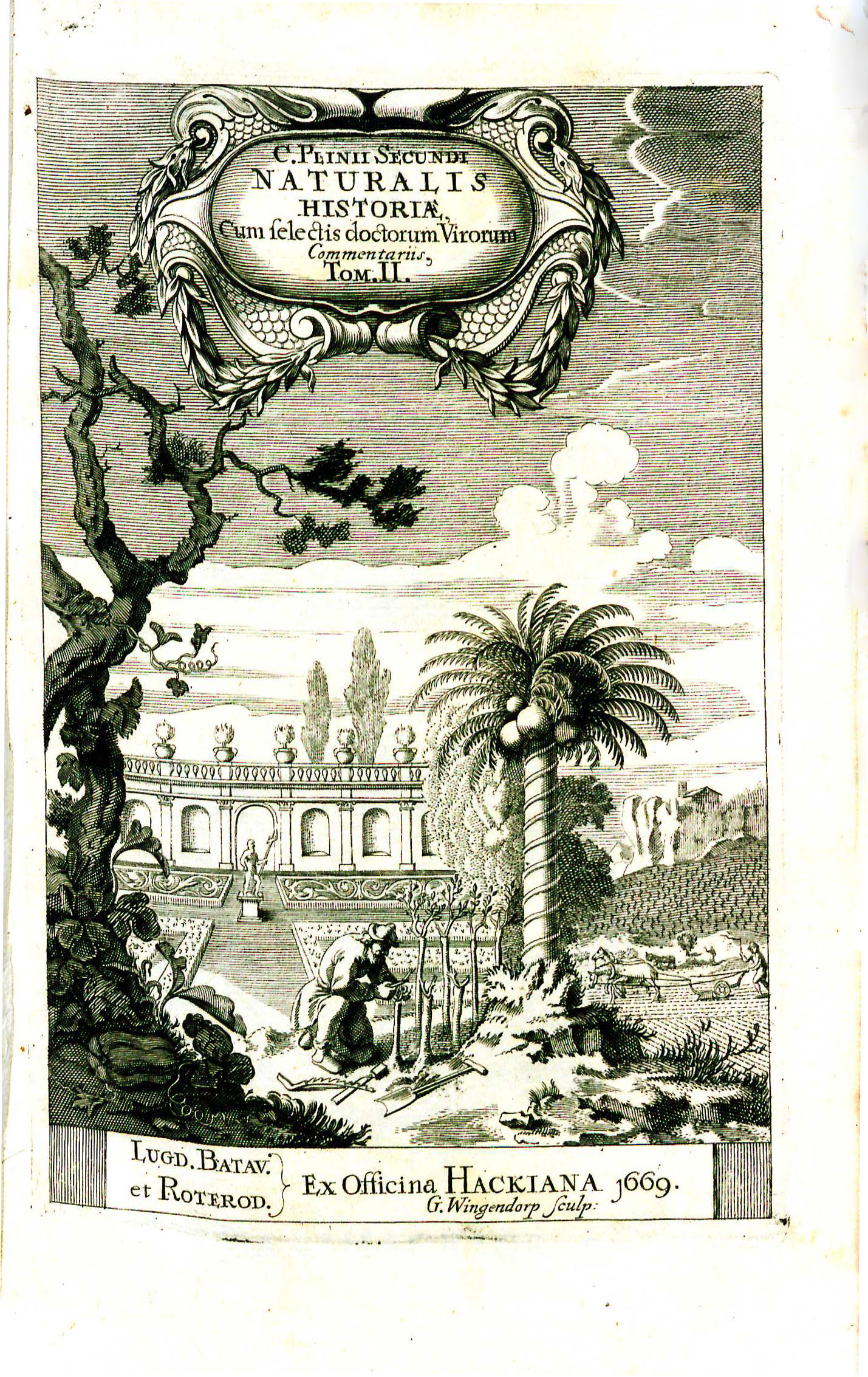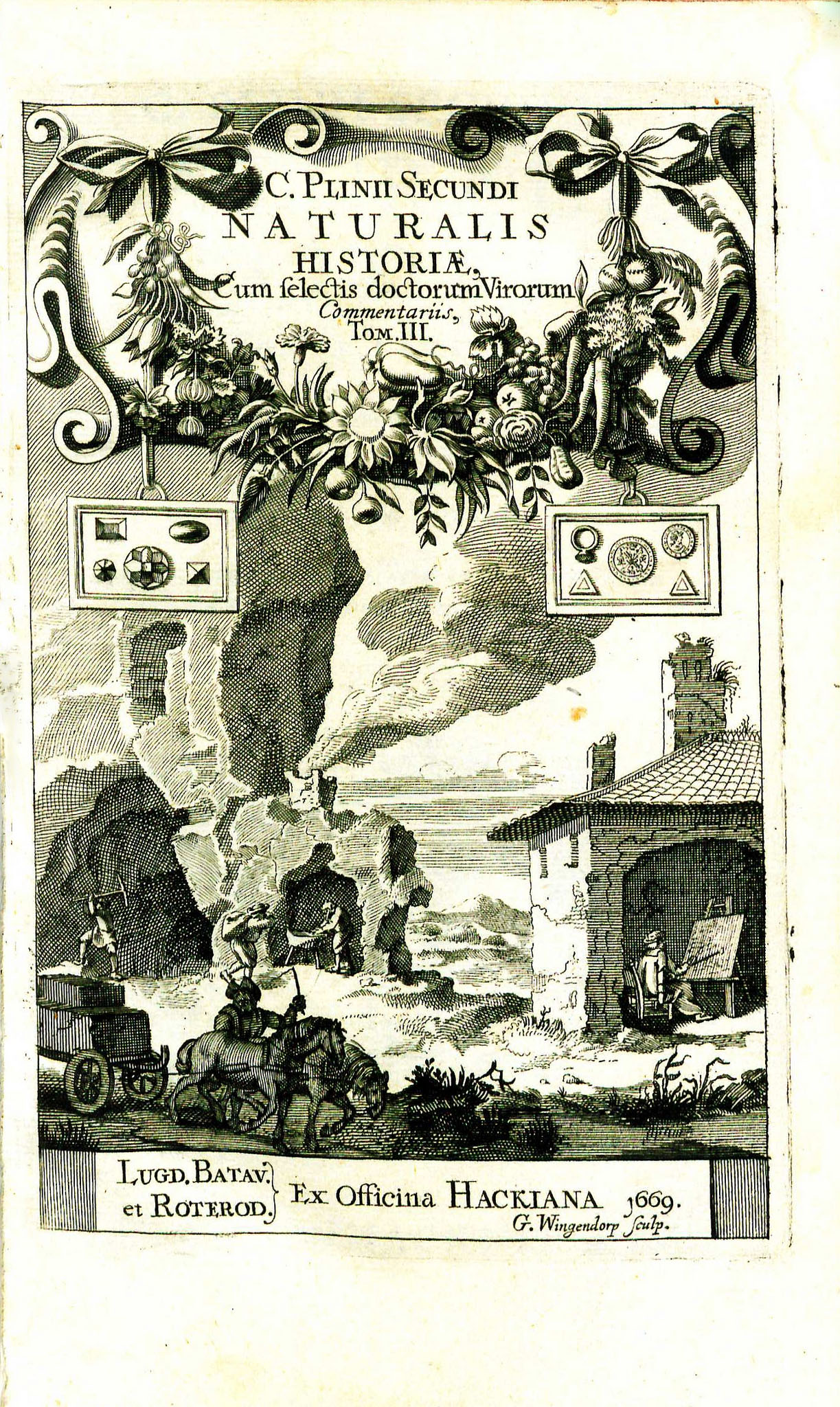Difference between revisions of "C. Plinii Secundi Naturalis Historiæ"
(→Description of the Wolf Law Library's copy) |
m (→Description of the Wolf Law Library's copy) |
||
| Line 27: | Line 27: | ||
</gallery> | </gallery> | ||
==Description of the Wolf Law Library's copy== | ==Description of the Wolf Law Library's copy== | ||
| − | Bound in full calf with raised bands. Spines in six panels with morocco title label to second panel, gilt volume number in third, remaining panels with gilt central lozenge and volute corner pieces. Has gilt | + | Bound in full calf with raised bands. Spines in six panels with morocco title label to second panel, gilt volume number in third, remaining panels with gilt central lozenge and volute corner pieces. Has gilt double rule to covers. Each volume contains the bookplate of George Paterson of Castle Huntley, Esq. on the front pastedown. |
View this book in [https://catalog.swem.wm.edu/law/Record/3621159 William & Mary's online catalog]. | View this book in [https://catalog.swem.wm.edu/law/Record/3621159 William & Mary's online catalog]. | ||
Revision as of 09:48, 3 February 2014
by Pliny the Elder
| C. Plinii Secundi Naturalis Historiæ. | |
|
Title page from C. Plinii Secundi Naturalis Historiæ., volume two, George Wythe Collection, Wolf Law Library, College of William & Mary. | |
| Author | Pliny the Elder |
| Published | Lugd. Batav. & Roterodami: Apud Hackios |
| Date | 1668-1669 |
| Language | Latin with Greek references |
| Volumes | 3 volume set |
| Pages | [16] 839, [66], 917, [43], 853, [41] |
| Desc. | 8vo (21 cm.) |
Naturalis Historiæ is broken into two main sections of eighteen volumes each. The first is a description of nature itself, and the second is a discussion of nature’s relation to man.[4] His vast knowledge is attributed to his habit of continuous study by his nephew, Pliny the younger, in one of his letters. Pliny the younger claimed that he was so diligent that when “In the country his whole time was devoted to study, excepting only when he bathed.”[5] Pliny the elder died in pursuit of scientific knowledge when he decided to investigate the eruption of Mt. Vesuvius (a trip that soon turned to an evacuation of the towns in danger.)[6] Pliny probably succumbed to an asthma attack which was brought on by sulfurous fumes.[7]
Evidence for Inclusion in Wythe's Library
Listed in the Jefferson Inventory of Wythe's Library as Plinii historia Naturalis. Varior. 3.v. 8vo. This was one of the titles kept by Thomas Jefferson and later sold to the Library of Congress in 1815. Both the Brown Bibliography[8] and George Wythe's Library[9] on LibraryThing include the 1668-1669 edition published in Leiden based on Millicent Sowerby's entry in Catalogue of the Library of Thomas Jefferson.[10] The volumes no longer exist to verify the edition, however, the Wolf Law Library did choose to purchase the edition recommended by Sowerby.
Description of the Wolf Law Library's copy
Bound in full calf with raised bands. Spines in six panels with morocco title label to second panel, gilt volume number in third, remaining panels with gilt central lozenge and volute corner pieces. Has gilt double rule to covers. Each volume contains the bookplate of George Paterson of Castle Huntley, Esq. on the front pastedown.
View this book in William & Mary's online catalog.
External Links
Read volume one of this book in Google Books.
References
- ↑ Jona Lendering, "Pliny the elder", Livius: Articles on Ancient History (August 2012), accessed October 11, 2013.
- ↑ Ibid.
- ↑ Ibid.
- ↑ Ibid.
- ↑ Marcus Tullius Cicero and Gaius Plinius Caecilius Secundus Letters and Treatises of Cicero and Pliny, The Harvard Classics, 9, ed. William Melmoth (New York: P. F. Collier & Son, 1909), 233.
- ↑ Ibid, 284-288.
- ↑ Lendering, "Pliny the elder."
- ↑ Bennie Brown, "The Library of George Wythe of Williamsburg and Richmond," (unpublished manuscript, May, 2012) Microsoft Word file. Earlier edition available at: https://digitalarchive.wm.edu/handle/10288/13433
- ↑ LibraryThing, s. v. "Member: George Wythe", accessed on January 31, 2014.
- ↑ E. Millicent Sowerby, Catalogue of the Library of Thomas Jefferson 2nd ed. (Charlottesville: University Press of Virginia, 1983), 1:458-459 [no. 1012].
